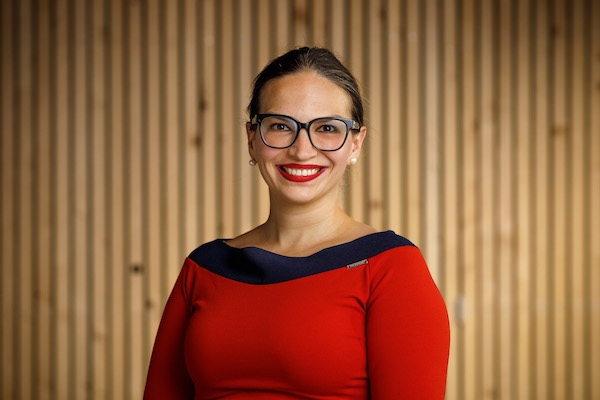Dr. Tatiana Brémova-Ertl is deputy senior physician at the Department of Neurology and deputy head of the Center for Rare Diseases at Inselspital Bern. She accompanies the Innosuisse project of machineMD as a research partner and is responsible for the clinical study for the evaluation of neos. We talked to her about her role in the project and the next milestones.
What is your role at machineMD?
I am the clinical research partner in the Innosuisse project that started one year ago. In this project we are three partners: Inselspital for the research and CSEM (Centre Suisse d’Electronique et de Microtechnique) and Helbling Technik Bern AG for the Software Engineering.
What are your specific responsibilities?
The first step last spring was the development of the functional prototype. For this purpose, we provided CSEM with data of healthy subjects to improve the calibration quality. Currently, we are preparing the clinical study. The goal of the study is to show what the device can do, especially how precisely and accurately it measures eye movements. Currently, we are doing the paperwork and preparing the submission to the ethics committee and to Swissmedic. As soon as we receive the approval, we will perform the measurements at the Inselspital and thus verify the accuracy and precision of these measurements. We will analyze the results and write a report that will contribute to the validation of the device and will hopefully lead to the CE marking.
What is your research background?
I have been involved in research on ocular motor functions for more than 10 years. From 2011 to 2018 I worked at the German vertigo and dizziness center in Munich. Eyes can tell us a lot about the brain functions and about brain health. They are a very good biomarker for different disease conditions.
How did you monitor the eye movements? Did you use devices to measure it?
We used several devices to measure eye movements and the function of the vestibular organs. The problem with these devices was that they were very sensitive to the movement of the head. As soon as the patient moved during the period between calibration and measurement, the measurement failed. Patients were instructed not to move, but this was very difficult for them. Many of them compensated for the ocular motor impairment with their body and head. This had a very negative impact on the quality of the data. It is also very difficult for neurological patients who are cognitively impaired and not 100% compliant. This is very different with neos®. Thanks to the VR technology, the patients can move their head more freely without affecting the quality of the data. The entire examination becomes much easier and more pleasant for the patient.
What are your other research projects? Are you planning to use neos® for them? What are your expectations?
I am the associate director of the Center for Rare Neurodegenerative Diseases. I am particularly interested in inborn errors of metabolism. The clinical picture of these diseases is often very complex and heterogeneous, which makes diagnosis difficult. It is important to find specific biomarkers that lead to earlier diagnosis. The eyes are promising biomarkers because they are easy to examine and provide convenient access to study brain health. Diagnosis, the moment we can name the disease, is a very important step for the family who has observed the symptoms sometimes for years. In many cases, the road to diagnosis is very long, complicated and stressful. By providing reliable and accurate data, neos® can help a lot here.
But there is often no cure for these diseases?
Yes, many of these diseases are genetic. The technology of gene therapies is still at its very beginning. But there are treatments that can modify some of these diseases - enzyme substitution, substrate reduction or a specific diet. In any case, it is important to get an early diagnosis and monitor the patient regularly. Eye movement function is a very good indicator of brain health. With neos®, we will be able to better characterize the disease, monitor the patients and measure their progress regularly.
What other possible uses do you see for the device?
We can also see the potential to use neos® for dizziness. I am a supervisor at the interdisciplinary dizziness clinic at the Neurozentrum Inselspital and work with the ear, nose and throat specialists at the ENT clinic. Many vertigo patients have oculomotor problems because the balance organs are very closely connected to the eye movement system. With this regard, neos can be used on the emergency ward to help differentiate between a stroke or an inner ear impairment. Vertigo is the second most common symptom in neurology. Given the significant number of patients coming to emergency due to acute vestibular syndrome, and the unmet need of differentiating the peripheral and central cause of vertigo, neos can be a game changer here. There are many other possibilities. I see a very big potential for neos and I'm really looking forward to working with it.
